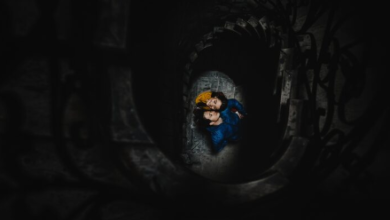Hong Kong Cinema’s Censorship History: From Category III Films to Modern Regulation

The vibrant and dynamic film industry of Hong Kong has long been a powerhouse of global cinema, renowned for its breathtaking martial arts epics, gritty crime thrillers, and poignant dramas. Yet, beneath the glittering surface of its international acclaim lies a complex and often misunderstood facet of its history: the realm of adult-oriented and sexually explicit films. To truly understand this dimension, one must look beyond common misspellings and sensationalist searches and delve into the formal, legal framework that defined it—the Category III rating system. Established in 1988, this classification became the defining label for films deemed unsuitable for viewers under the age of 18, creating a unique space for filmmakers to explore themes of sex, violence, and social taboos with a freedom unprecedented in the broader Chinese cinematic landscape. This article will explore the origins of the Category III rating, its cultural and commercial heyday in the late 80s and 90s, the iconic films and personalities it produced, and its evolution in the face of changing social mores and political realities. By examining this history, we gain not only a deeper appreciation for the sheer diversity of Hong Kong’s cinematic output but also a clearer lens through which to view the intricate relationship between censorship, artistic expression, and commercial exploitation.
The Birth of a Classification: The 1988 Film Censorship Ordinance
The story of explicit content in Hong Kong cinema cannot be told without understanding the pivotal moment of 1988. Prior to this year, film censorship in Hong Kong was a more ambiguous affair, governed by a patchwork of regulations that often led to inconsistent rulings. The government’s introduction of the Film Censorship Ordinance was a direct response to growing public and legislative concern over the increasing levels of graphic violence and sexual content in locally produced films. This new law established a three-tier rating system: Category I for all ages, Category II for films not suitable for children (later split into IIA and IIB for more granular guidance), and the most restrictive, Category III. The creation of this legal category was a watershed moment. It did not seek to ban such content outright but rather to contain and regulate it, effectively creating a designated marketplace for adult entertainment within the film industry. This move had the dual effect of pacifying moral campaigners by formally restricting access for minors while simultaneously providing a legitimate, though often stigmatized, channel for producers and distributors. The immediate aftermath saw a flood of productions rushing to capitalize on this new, clearly defined niche, leading to a boom that would define a unique era in film history.
The Golden Age of Category III: Exploitation, Art, and Social Commentary
The late 1980s and early 1990s marked the commercial peak of Category III cinema, a period characterized by prolific output and staggering variety. It is a grave oversimplification, however, to view this era solely through the lens of pornography. While there were numerous films produced with the primary aim of titillation, the Category III label encompassed a much wider spectrum. It included extreme horror films that pushed the boundaries of gore and psychological terror, gritty crime dramas based on real-life sensational cases, and even dark comedies that used sex and violence as tools for social satire. Films like “Naked Killer” (1992) blended eroticism with violent action in a stylish package that developed a strong cult following internationally. Conversely, a film like “The Untold Story” (1993), based on the gruesome real-life serial killings in a Macanese restaurant, used its Category III-rated extreme violence not for mere shock value but to create a deeply unsettling portrait of human evil, anchored by a chilling performance from Anthony Wong. This period also saw established mainstream actors and directors occasionally dipping into the Category III pool, often under pseudonyms or for a substantial paycheck, lending a veneer of legitimacy to projects that would otherwise be dismissed as pure exploitation. The ecosystem was robust, with dedicated production houses, cinema chains, and later, video rental stores, ensuring a steady supply for a demanding audience.
Iconic Figures and the Legacy of a Notorious Genre
The Category III era was propelled by a number of iconic figures who became synonymous with the genre, both in front of and behind the camera. Actress like Amy Yip became a household name, celebrated for her combination of charisma and sexuality, often in roles that balanced comedy and eroticism. Meanwhile, director Wong Jing, a prolific filmmaker known for his commercial sensibilities, mastered the art of the Category III production, churning out films that were often commercially successful despite critical panning. The legacy of these films is complex and enduring. For many international cinephiles, their first encounter with Hong Kong cinema outside of martial arts classics was through the grainy VHS tapes of these notorious Category III titles. They formed a crucial part of the “Asia Extreme” wave that captivated Western audiences in the late 1990s and early 2000s, influencing a generation of filmmakers abroad. Within Hong Kong itself, these films serve as a gritty, unvarnished time capsule of the colony’s final years before the 1997 handover, reflecting underlying social anxieties, a spirit of rebellious commercialism, and a unique cultural moment where anything seemed possible on screen. They represent a form of cinematic id, a raw and unfiltered expression that stood in stark contrast to the more polished and politically cautious cinema that would follow.
The Decline and Evolution in the 21st Century
The boom of Category III cinema was not destined to last. Several converging factors led to its significant decline by the turn of the millennium. The most devastating blow was the widespread piracy facilitated by new digital technologies, which decimated the profitability of all Hong Kong films, but hit the lower-budget Category III sector particularly hard. Why pay for a cinema ticket when a cheap, pirated VCD was readily available? Furthermore, the rise of the internet provided even more direct and private access to adult content, rendering the cinematic titillation of Category III films less novel and less necessary. Social attitudes also began to shift, with a growing fatigue towards the excesses of the genre. The 1997 handover to China introduced a new political climate, where the industry increasingly looked towards the massive mainland Chinese market, which strictly prohibits any form of adult-rated content. To secure co-productions and distribution in China, Hong Kong filmmakers had to adhere to the stringent censorship rules of the mainland, effectively making the production of Category III films a commercial dead end. While the official rating still exists and is occasionally applied to particularly violent or disturbing horror films, the era of its prolific, genre-defining use is over, having evolved into a more cautious and less frequent classification.
Conclusion
The history of sexually explicit content in Hong Kong cinema, formally encapsulated by the Category III rating, is a tale of regulation, exploitation, and unexpected artistry. It is a history that cannot be separated from the unique social, political, and economic context of Hong Kong during a period of immense transition. From its formal establishment in 1988, through its commercially explosive and creatively wild heyday, to its eventual decline in the face of digital piracy and a new political reality, Category III cinema remains a fascinating and integral chapter in the story of Hong Kong’s film industry. It challenges viewers to look beyond the sensational surface and recognize the complex interplay between censorship and creativity, between crass commercialism and genuine cultural commentary. Understanding this history allows for a much richer and more complete appreciation of Hong Kong’s contribution to global film culture, reminding us that its legacy is built not only on the graceful flight of wuxia heroes but also on the gritty, provocative, and unforgettable shadows of its most notorious productions.
Frequently Asked Questions (FAQ)
Q1: What does “Category III” actually mean in Hong Kong?
Category III is a legal film rating classification in Hong Kong, introduced in 1988, which mandates that no one under the age of 18 is permitted to view the film. It is applied to films containing graphic violence, strong sexual content, or other mature themes deemed inappropriate for minors. It is not a genre itself, but a rating that encompasses many genres.
Q2: Are all Category III movies just pornography?
No, this is a common misconception. While the Category III rating does include sexually explicit films, it also covers a wide range of other content. This includes extreme horror movies (e.g., “The Untold Story”), brutal crime thrillers based on real cases (e.g., “Dr. Lamb”), and even some dark social satires. The label signifies adult content, which can be sexual, violent, or both.
Q3: Why did the production of these films decline?
The decline was due to a combination of factors: the devastating impact of video and digital piracy on profitability, the rise of the internet as a source for adult entertainment, shifting audience tastes, and, most significantly, the industry’s increasing focus on co-productions with mainland China, where all adult content is strictly forbidden.
Q4: Where can I legally watch these films today?
The availability of classic Category III films on mainstream streaming platforms is often limited due to their content. However, dedicated specialty physical media labels (like Vinegar Syndrome or 88 Films) often release restored versions on Blu-ray. Some may also be available for digital rental or purchase on platforms like Amazon Prime Video, though the selection varies greatly by region.
Q5: How is content regulated in Hong Kong cinema today post-1997 handover?
The Category III rating system remains in place under the Hong Kong Special Administrative Region. However, the film industry now operates with a keen awareness of the censorship standards in mainland China. To access the vast Chinese market, most major productions are made as co-productions that must adhere to China’s strict content guidelines, which has led to a general toning-down of graphic violence and the complete absence of sexual content in mainstream Hong Kong-backed films aimed at that market.



